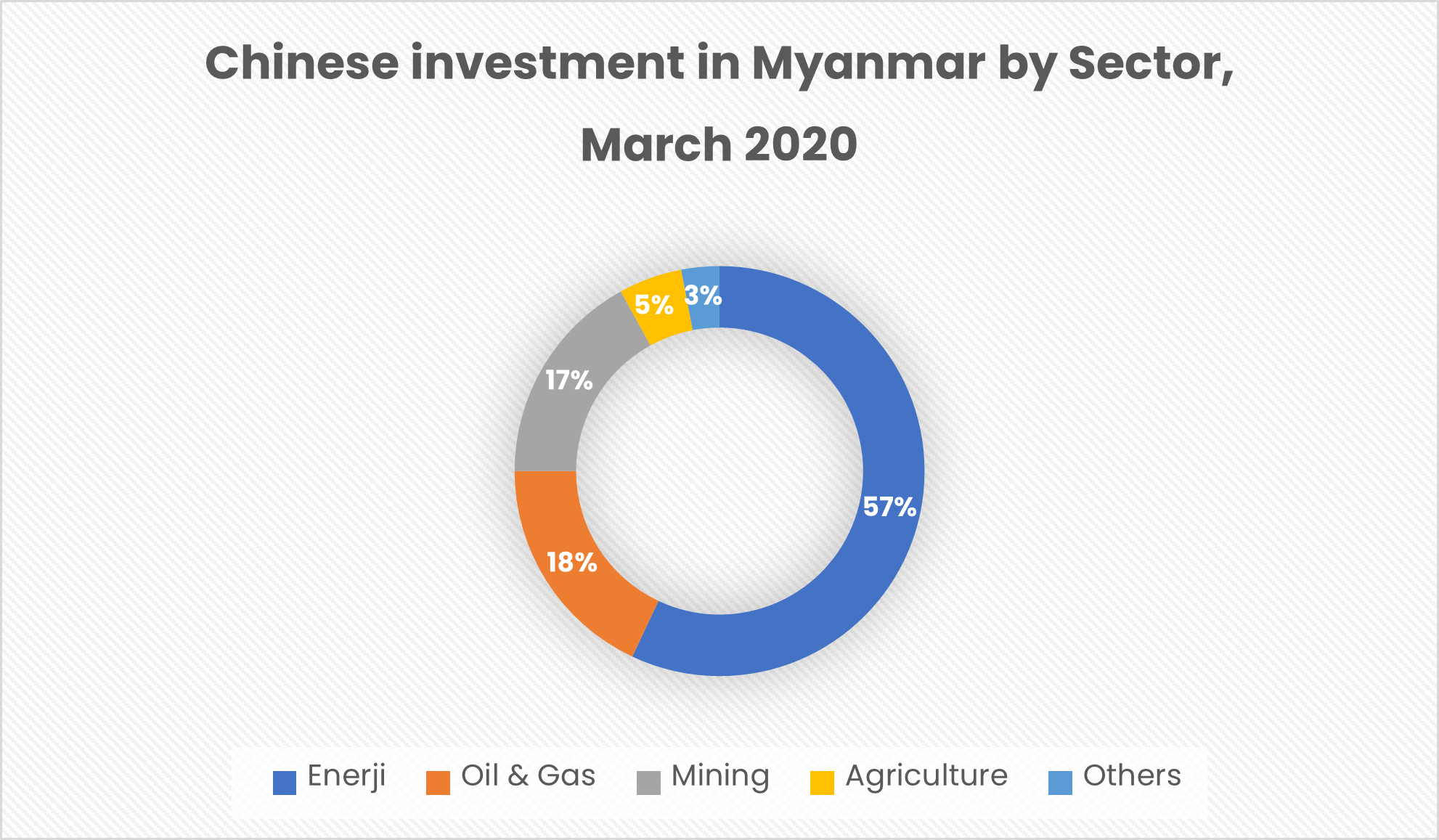
Dr. Md. Nazmul Islam is an academician in Political Science and International Relations, is an author of several books, many book chapters and peer-reviewed articles. Dr. Islam worked in different positions and projects conducted at the University of Cambridge, Saarland University, University of Trento, Ankara University, OIC-SESRIC, BRAC University, BRAC, Grameen Bank-Yunus Center, UNDP, YTB and ILO. Dr. Islam’s major areas of interest cover the policy, politics, and foreign policy of great, emerging and middle powers in regional and international politics.
After the establishment of China in 1949, Myanmar was the first non-Communist country who recognized China. However, the diplomatic relations started between two countries on June 8, 1950.[1]
Throughput the history, China’s continuous support for the Myanmar’s military rule, put them in a trustable position to make the effective relations with Myanmar. Basically, since the Deng Xiaoping regime played an important role to improve the relations between the two countries. However, after 1988, the relations between two countries derived from trade relations to the strong political relations, as China was only a country who supported the Myanmar’s military rule against the pro-democracy protests in 1988.[2]
China’s Grand Strategy in Myanmar
The way of China’s interest in Myanmar is almost same even after the recent military coup on February 1, 2021. China’s interest in Myanmar divided into two peripheries, such as democratic leaders and military in Myanmar. After the recent military coup in Myanmar, China’s policy towards Myanmar is very ambiguous but purely interest oriented. Although it was very clear that after the coup, the people and protesters torched the Chinese-financed factories in Yangon which is certainly a direct message towards China and its economic interests in Myanmar.
Nevertheless, Myanmar is a key strategic partner for China’s Belt and Road Initiative in the Asia Pacific and Indo-Pacific region. Apart from the China-Pakistan Economic Corridor (CPEC), China Myanmar Economic Corridor (CMEC) is one of the most influential and effective silk, trade and economic road for China. Meanwhile, recently, the Myanmar junta has invited bids to provide legal services to the KPSEZ and deep-sea port project in Myanmar’s western Rakhine State, a key strategic component of China ‘s Belt and Road Initiative (BRI) in the area. As it can be clearly argued that the Myanmar junta’s decision to expedite China funded Kyaukphyu Special Economic Zone (KPSEZ) and deep-sea port project could emerge as a challenge for India built Sittwe Port given geographical proximity between the two ports. As both countries, China and India have very clear interest in the region, particularly in the Rakhine state of Myanmar.
To understand the China Myanmar Economic Corridor (CMEC), a connectivity scheme tying Myanmar’s economy to China’s, were developed with Beijing by the deposed elected government. Unlike CPEC, CMEC has included several projects such as industrial and transportation projects. Additionally, meticulous reviews of social and environmental impacts, assurance of financial viability and analysis to ensure the proposal would first and foremost benefit Myanmar’s economic development goals that will be ensured through the CMEC. In there, the project of KPSEZ is one of the important strategic tools that will ensure the China’s interest in the region.
For long time, Beijing considers the KPSEZ and the deep-sea port vital to the BRI, as they will give China direct access to the Indian Ocean, allowing Chinese trade to bypass the congested Strait of Malacca near Singapore, while boosting development in landlocked Yunnan Province, which borders Myanmar. This will be part of China Myanmar Economic Corridor (CMEC). Oil and natural gas pipelines are already functioning between Kyaukpyu and Kunming in Yunnan province. And it was the one of the reasons, China was silent when Myanmar’s military did the genocide on Rohingya people in Rakhine state.
China constructed a natural gas and oil pipeline running in parallel which starts from Kyaukphyu City in Myanmar’s Rakhine State to China’s Yunan region constructed at a combined cost of USD 4.5 billion. “China also constructed a 22 million tons annual capacity oil terminal at Kyaukphyu. The natural gas pipeline can account for 16.3% of China’s total gas imports according to data from 2018. If utilized fully it has the potential to increase the dependency rate to 9.8%. The oil pipeline can account for 4.3% of China’s total oil imports when operating at full capacity according to data from 2017.”

Till March 2020, China’s FDI investment was nearly USD 21 billion that has been one of the largest sources of Foreign Direct Investment (FDI) for Myanmar. A majority of China’s investments in Myanmar are in the power sector (57%), while oil, gas and other mining make up 18% of Chinese investment. A typical feature of Chinese companies investing in Myanmar is that they are usually state-owned. Besides energy, oil and gas related projects, China is investing their FDI in different sectors of Myanmar such as a deep seaport at Kyaukphyu for USD 1.3 billion. Besides this project, other projects like the development of 3 economic zones on the Myanmar-China border and the development of the new quarter for the city of Yangon were also announced.
However, by giving this opportunity to the China, Myanmar’s current Junta clearly identified how and from where they are getting their supports. Although Myanmar received an Indian grant of $484 million for the Kaladan multi-modal transit transport project, which includes Sittwe port- an inland water terminal at Paletwa on Myanmar’s Kaladan river and creating road connectivity from Paletwa to Zorinpui in Mizoram, still, Myanmar choose their side with China. Apart from the current argument, in future, this project will be a strategic economic threat for Bangladesh. Even, by implementing this project, Bangladesh may not be successful to repatriate the Rohingya refugees to the Myanmar’s Rakhine state.
[1] Lixin Geng, “Sino-Myanmar Relations: Analysis and Prospects”, The Culture Mandala, 7(2), December 2006.
[2] David Shambaugh, Power Shift: China and Asia’s New Dynamics, Nazrul Institute.

